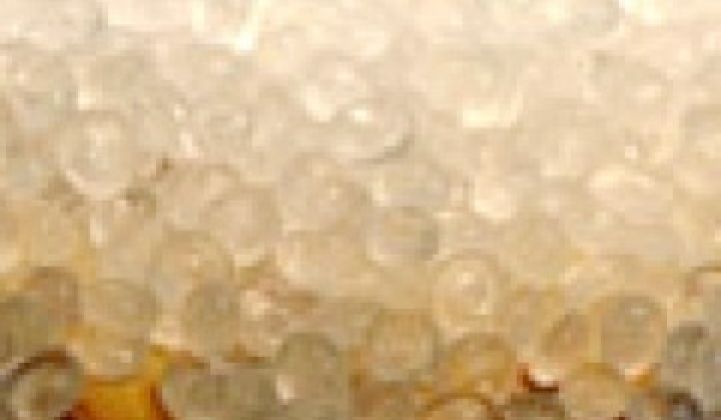DuPont will later this year try to show off a tool that can help get rid of glass.
The chemical giant-one of the biggest suppliers of chemicals and films to the solar industry-will be able to demonstrate a prototype of a tool later this year that effectively will let manufacturers of copper indium gallium selenide (CIGS) solar cells and OLED displays protect their products with thin layers of ceramic and polymer material instead of glass. The prototype is being developed under a Department of Energy grant. Ideally, the material could move toward commercialization in a few years.
"The CIGS sensitivity to moisture is quite severe," said Marc Doyle, global business director, DuPont Photovoltaic Solutions. "It is easy to make a good moisture barrier with glass, but what the industry needs is a transparent, flexible barrier with electrical properties."
To date, moisture has been a major stumbling block for both OLED and CIGS manufacturers: water vapor seeps in and defects and malfunctions often follow. The moisture problem for OLEDs is probably a harder one to fix, said Doyle. The OLED industry, though, only has to produce displays and bulbs that will last five to ten years. Customers who buy CIGS solar panels will want twenty year warranties and expect the products to last for 30 years.
A handful of companies-Nanosolar, Ascent Solar Technologies-have begun to produce flexible CIGS modules while start-up Palios wants to commercialize a barrier film it is acquiring in a bankruptcy sale. Still, all of these companies will have to pass through rigorous tests before sales can zoom.
Besides protecting against moisture, a ceramic/polymer barrier could cut costs. Glass for solar cells can cost $10 per square meter or more, he said, which can translate roughly to a cost of ten cents per watt in a solar module. Ideally, ceramic/polymer barriers would cost less once in mass production. These sheets would also reduce the overall weight, which would cut shipping costs.
And of course, the ceramic/polymer solar modules would be flexible, which would expand the options for installation. These sorts of modules could be integrated, potentially, into membrane roofing.
Potentially, the market might begin to see lighter and/or flexible crystalline silicon modules based around similar barriers and substrates. Manufacturers are working to reduce the thickness of crystalline wafers to 160 microns. The thinner wafers become, the more flexible crystalline will become.
DuPont isn't a name many think of when contemplating the solar industry, but neither are 3M and Dow Chemical for that matter. Still, all three play crucial background roles in the industry. DuPont has produced encapsulants and metal pastes for the past several decades to PV makers. Tedlar, the material that serves as a back sheet for crystalline solar cells, is a de facto standard. DuPont, in fact, recently committed $295 million to expand its Tedlar manufacturing capacity.
Although solar companies continually tweak their formulas, one change that may not come about as quickly is a switch from silver to copper paste for wiring the solar cells inside modules. Copper costs less, but the raw material costs could be outweighed by the changes required in processing. Suntech Power Holdings employs copper in its Pluto panels, and start-up 1366 Technologies has promoted copper. It's one of those issues to keep an eye on.



